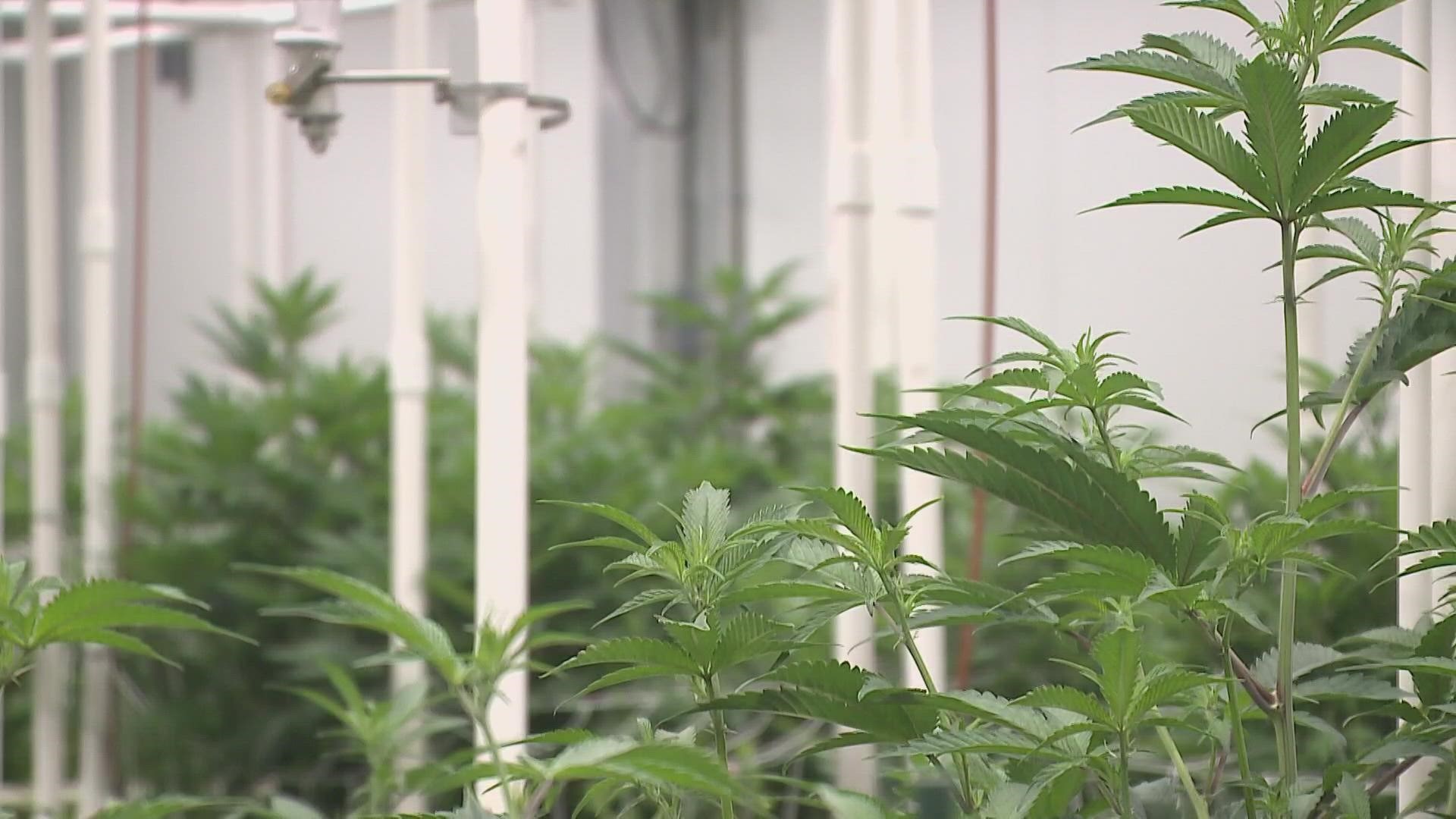PORTLAND, Maine — Maine may be known for its blueberries, potatoes, and milk, but not one of these are Maine’s most valuable crop.
That crown, as of 2020, belongs to cannabis. Marijuana sales totaled $266 million that year, compared to $184 million for potatoes, $124 million for milk and $26 million for blueberries. But within the rapid growth and staggering sales figures, there’s a bit of a secret: Producing cannabis can be really carbon intensive.
A 2012 report published in the journal Energy Policy on the carbon footprint of indoor production found that cannabis production makes up 1 percent of national electricity use. A separate study published in Nature Sustainability in 2021 estimated that growing just 1 ounce of cannabis indoors is the equivalent of burning 11 gallons of gasoline.


"Indoors" is largely the key.
Nationally, 80 percent of cannabis is grown indoors with lighting and environmental controls designed to maximize the plant’s yield. These setups can consume up to 2 kwh of electricity per square meter. That's 40 times what it takes for leafy greens like lettuce to be grown indoors.
There is one big reason most cannabis is grown inside, according to Nate Burdick of Upward Organics. Burdick runs the Maine outfit that is committed to low-carbon growing practices via outdoor crops and sun-powered greenhouses.
“Obviously cannabis was illegal for a lot longer than it has been legal, and you know there are lots of security threats when growing outdoors, so people started to move their growing operations indoors," Burdick said.
There are other advantages to growers, too, like being able to grow year-round and mostly avoiding the perils of severe weather on their crop. But there’s an upside to some of that weather stress.
“Honestly, sometimes the stress that a plant gets being exposed to the elements, whether it's storms or frost or wind, those actually help the plant express certain characteristics that are deemed favorable to the consumer," he said.
But some growers aren’t in a hurry to convert to outdoor growing, and one main reason is pretty simple: You can’t effectively grow cannabis during the winter, which as we know can be quite long in Maine.
It’s not an all or nothing equation, however. Using solar or wind energy to power indoor growing operations can greatly reduce the carbon footprint. In addition, switching to LED lights and better ventilation systems can reduce the amount of energy required overall.
Ultimately the consumer would need to decide how much the carbon footprint of their cannabis matters to them, and that pressure or lack thereof will determine future methods of growing.

